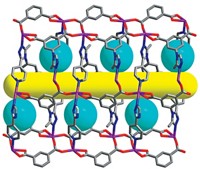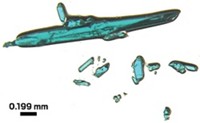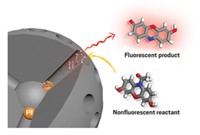Advertisement
Grab your lab coat. Let's get started
Welcome!
Welcome!
Create an account below to get 6 C&EN articles per month, receive newsletters and more - all free.
It seems this is your first time logging in online. Please enter the following information to continue.
As an ACS member you automatically get access to this site. All we need is few more details to create your reading experience.
Not you? Sign in with a different account.
Not you? Sign in with a different account.
ERROR 1
ERROR 1
ERROR 2
ERROR 2
ERROR 2
ERROR 2
ERROR 2
Password and Confirm password must match.
If you have an ACS member number, please enter it here so we can link this account to your membership. (optional)
ERROR 2
ACS values your privacy. By submitting your information, you are gaining access to C&EN and subscribing to our weekly newsletter. We use the information you provide to make your reading experience better, and we will never sell your data to third party members.
Materials
Tunable Polymer Membranes
October 15, 2007
| A version of this story appeared in
Volume 85, Issue 42
Take a close look at an average polymer membrane, and you'll find a landscape riddled with channels and pores. The size and shape of those features determine how well the material filters out various ions and molecules. Young Moo Lee of Hanyang University, Seoul, South Korea, and an international team of researchers now have developed a type of polymer membrane that provides 100 times better throughput and selectivity than membranes made with conventional polymers (Science 2007, 318, 254). The new membrane could have applications in gas separation, organic batteries, or fuel cells. Key to the material's performance are its uniform bottleneck-shaped pores, which are reminiscent of cellular ion channels. These slim passages let linear CO2 slide through while keeping bulkier CH4 out. Lee's team creates the tiny structures through the rearrangement of aromatic polyimides. Upon heating, the polyimides transform into more spatially confined meta- or para-substituted phenylene-heterocyclic ring polymeric structures (meta shown). The pore size can be further tailored by adding acidic dopants, such as HCl or H3PO4.





Join the conversation
Contact the reporter
Submit a Letter to the Editor for publication
Engage with us on Twitter